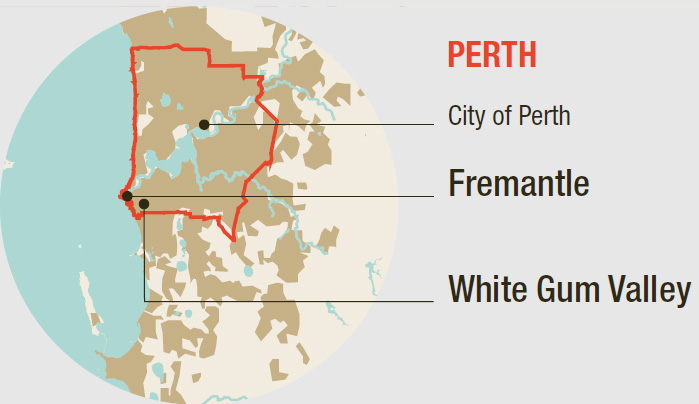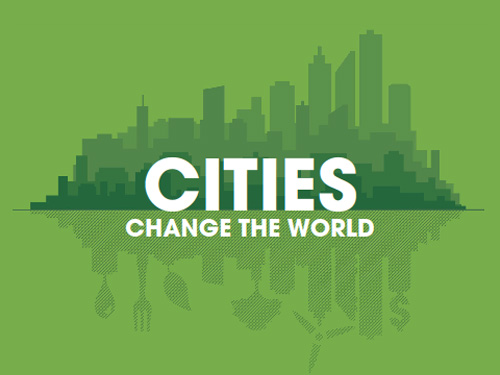Although the efforts of the new ecological and resilient agenda of cities are bearing fruit, they are still insufficient. If actions consist of the reduction of our impact, the overall result is still negative. Can urban planning act as a key in the transformation from the concept of a “sustainable region” towards an urban ecosystem? At which scales are interventions most efficient?
Cities compete in a global economy and need to constantly prepare for the next economy or they start to miss out. They can lose the edge that brings young people and new jobs. Paris is showing how to plan for a carbon neutral future, Freiburg for the sustainable city, New York has pushed the smart, resilient city agenda. Tokyo leads in public transport and walkable centres, Melbourne in liveability, Singapore in biophilic urbanism…
Regenerative cities
The idea that has not yet caught on in the same way is the ‘Regenerative City’. Many of the above theories or paradigms are trying to show how cities can reduce their environmental footprint whilst continuing the historic role of cities to create social and economic opportunities. However, the Regenerative City goes beyond this to suggest cities need to regenerate their environment whilst increasing social and economic opportunities. This is all together a local, regional and global environmental regeneration. The Regenerative City, instead of reducing carbon emissions, needs to be sucking carbon out of the atmosphere; instead of reducing impact on biodiversity it should be creating new habitats that increase ecological opportunities; instead of consuming less phosphorus and nitrogen it should be extracting these excess nutrients from sewage, rivers, lakes and groundwater so they can be returned to agriculture. The same idea can be applied to any major environmental issue and is in particular being suggested as a way to demonstrate how cities can be much better and safer options than other solutions at ‘geoengineering’ the atmosphere (i.e. large-scale interventions on the climate systems). The metabolism of the city is thus significantly altered in a Regenerative City. Instead of reducing the fl ow of resources into wastes, the Regenerative City creates resources out of wastes in a circular economy, powered by the sun, just as ecosystems do. There are small examples that are starting to be expressed as regenerative projects but the opportunity to push this agenda is still largely symbolic. Each of the cities expressed above are moving down this path. For example, Singapore is showing increased biodiversity in its city as new habitats are created in the forest- like structures of green walls and green roofs. Paris’s carbon neutral strategy can be used to create a bioregion with significant carbon capture in forests, agricultural soils from recycled compost, and tree farms for urban buildings that sequester carbon for hundreds of years. Freiburg can expand its extensive solar system to be exporting more renewable energy than it is consuming. Tokyo’s fringes are shrinking, so the city can demonstrate how regeneration of more central urban areas help the contraction of its urban footprint. New York can add to its smart technology for energy, water and waste and begin regenerating its bioregion. And Melbourne can continue its liveability growth while adopting much more stringent environmental goals. So, how would any city begin the journey to being regenerative? In my own city of Perth we are learning how to start small and scale up using urban research projects in partnership with developers, local governments and utilities. We are also learning that different parts of the city are very different in their urban fabric and thus in their opportunities to be regenerative.
Urban fabrics and regenerative opportunities
The different areas of the city are obviously going to have different approaches as cities begin scaling up towards being regenerative. The “Theory of Urban Fabrics” enables us to understand how different parts of the city were formed and should be respected as they move into a new future. For example: A roof-top solar is best at an individual household scale in suburban areas. Here, a lot more attention is needed on shared transport systems than in walkable, dense cities, which can switch much easier to zero carbon transport (walking cycling and transit). In these denser areas however more community-scaled renewable energy options will be needed.
Peter Newman, Professor of Sustainability, Curtin University, Australia
Upscaling local initiatives: the Perth experience
Josh’s House. This project is about transforming a simple, typical, Australian house lived in by a family of four into a carbon positive building. Thanks to 70 channels of monitoring, openly accessible on internet, it provides a wealth of information on how to build a house in a new, net carbon positive way. Josh’s House is regenerative in carbon and recycles its water. Its power and water systems have been used in the scaled up projects below that are enabling the research team to examine the opportunities provided by shared infrastructure. (www.joshshouse.com.au).
Net Zero Energy Homes. The second step consisted of a national project that worked with developers who build project homes. They are designed as Net Zero Energy Homes (ZEH) using efficient heat pump hot water systems and reverse cycle air conditioning, combined with photovoltaic systems. A new voluntary adoption of the zero carbon outcome suggests there is now a market opportunity to go further into regenerative territory.
White Gum Valley. This leads to the redevelopment of the White Gum Valley (WGV) neighbourhood in Fremantle, a suburb of Perth. This commercially successful residential precinct of 100 housing units was designed to be at least Net Zero Energy or even Carbon Positive. It is a combination of energy efficient design and renewable energy, enabled through design guidelines and sustainability incentives and includes multiple housing options, such as social housing for artists, housing for young people, etc. Planning objectives went beyond the building by taking into account retention, planting of trees, re-purposing a storm water sump into open space and community ground water bore for all irrigation. Along with diverse community engagement, this led to rapid sales and enabled the developers and state government to declare it a financial success. The Peer-to-Peer Trading system using block chain is a world first. Early data suggests it is carbon positive. The project shows how scaling up provided new ways of sharing solar energy and water as well as a small shared electric vehicle project.
One Thousand Homes. In order to extend WGV innovations into a much larger scale that provides more options for urban sharing, another project consists of 1000 housing units of re-developable land. It includes a range of innovations such as community batteries, water sensitive urban design, and a potential Trackless Tram transit system linking to the city centre in Fremantle. A shared community governance that enables new distributed energy, water and transport systems is also included.
Smart City Renew Nexus. Finally, this project scales up to a whole local community of 25,000 people. It has begun to monitor and model how a renewable power and water system at community scale can use Peer-to-Peer trading managed through block chain. Homes throughout the City of Fremantle have been fitted out with monitoring systems, enabling the system to be constantly optimized. New electricity and water tariffs will be suggested based on the results. This is a partnership with the utilities who have learned from the smaller scale projects, not just because they are successful and economically attractive but because they provide insight into a new business model that manages distributed power and water systems.


